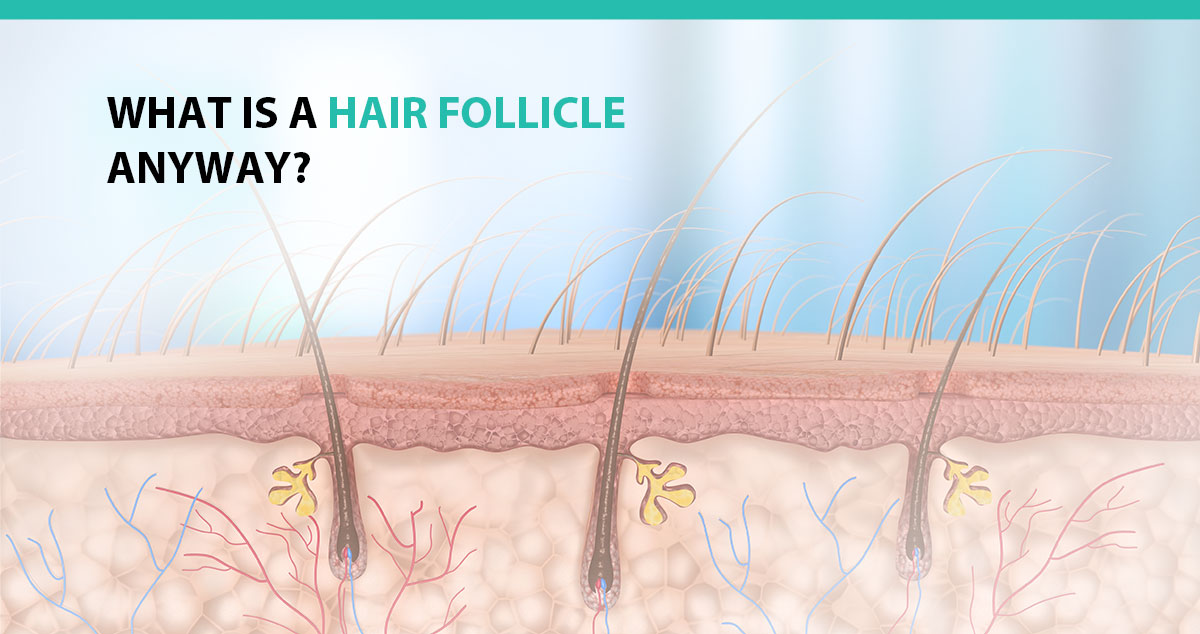
Everyone’s an expert on hair – or so it seems these days. Just Google “hair” and see what pops up – there are a lot of websites that have good science behind them. But there are just as many websites that perpetuate ancient myths and haircare ideas that have long been disproven by research and study.
Most of those myths can be dispelled pretty easily once people understand hair follicles and how they work, though. So let’s get right to the root of the issue and dive into a better understanding of hair follicles!
The Structure Of A Hair Follicle
One of the common misconceptions about hair follicles is that they are actually the hair itself. Though the hair, root, and follicle are in a symbiotic relationship, the follicle is its own unique structure.
Have you ever had an in-grown hair? Besides being painful and having the potential for infection, they provide a good way to understand follicles. That spot where the hair grows from and that develops swelling is a pore in your skin, shaped like a tube, that protects, nourishes, and houses the root of a hair.
There is one root and one hair per follicle. That’s it. Why is that important to know? Some common myths that persist about hair include the old tale that “if you pluck a gray hair, two will grow in its place” and another that you should “brush your hair 100 strokes per day” to keep it healthy.
Looking at the structure of a hair follicle, they only house one hair at a time. That means that if you pluck out a single gray hair, it will simply grow another single hair. (We do not condone or encourage the plucking of gray hairs, but trust us on this one!)
The same logic applies to brushing 100 strokes a day. We naturally lose some hair every day – it’s just part of the life-cycle of individual hairs. But brushing more than is necessary will actually remove more hairs than would naturally come out on their own. The result is that you are pulling out hair follicles, usually at the root, while brushing, thus thinning out the overall coverage of your hair on your head.
Those hairs will grow back – individually – at the usual rate, so you will have multiple different lengths of hair growing at the same time, especially if you brush your hair 100 strokes per day like the folklore says.
How Does A Hair Follicle Work?
Hair follicles live in the top two tiers of your skin – the epidermis and dermis. They are very close to the surface to allow for the hairs to grow externally without growing into the body.
They are supported by the hypodermis layer, which is where the blood vessels can reach the root and provide the nutrients necessary for healthy hair to grow. The root is embedded in the hypodermis layer, which means that sometimes when hair is pulled out randomly it does not include the root itself, which means the hair will grow back at a fairly normal rate.
However, pulling a hair out properly can remove the entire hair from the follicle, which can increase the time before a new hair forms in its place.
Pulling out a hair, however, does not remove the follicle, which is a common misconception put forth by television and other popular media. The follicle itself is the container in your skin which nourishes and holds the hair in place.
The follicle delivers blood and nutrients through the skin into the root of the hair, but also defines the color of the hair growing from it. This is why hair tends to turn gray over time – the cells that control the pigment of our hair die as people get older, leaving the hair to grow without the coloring it might have had.
What Happens To Hair Follicles In Hair Loss?
Much like other cells in our bodies, most of the time the cells in hair follicles stop producing new hair and eventually die out. This is particularly prominent on top of the scalp, which is where pattern hair loss occurs in both men and women.
Hair follicles on the back and sides of the head, however, tend to stay active for much longer, and so they can be used to transplant into patients using Follicular Unit Extraction (FUE) or Follicular Unit Transplantation (FUT). There are other methods still in use, but FUE and FUT are the most common hair transplantation procedures in use because they are effective and use the donor’s own hair follicles to naturally continue to grow their own hair.
These hair follicles don’t usually stop producing hair suddenly – it tends to start creating thinner hair, then balding in fairly predictable patterns in most people. One of the effects of this that researchers have noticed is that the blood vessels connecting to the root tend to become unhealthy.
By taking healthy hair follicles with healthy blood vessels from other parts of the body, hair restoration procedures give your body the chance to continue growing your own hair, just in a new location.
Educate Yourself About Hair With Trusted Sources
Dr. Joseph Williams is the leading expert in hair loss, hair restoration, and hair transplantation in Las Vegas and Nevada.
If you are in the area and looking to learn more about how to manage your hair loss, schedule a consultation today and find out how Advanced Medical Hair Institute can help you get past the myths and discover which hair restoration treatment is right for you.










